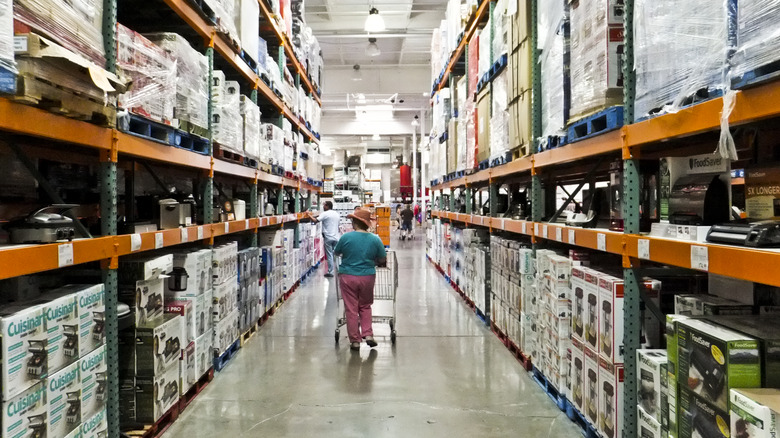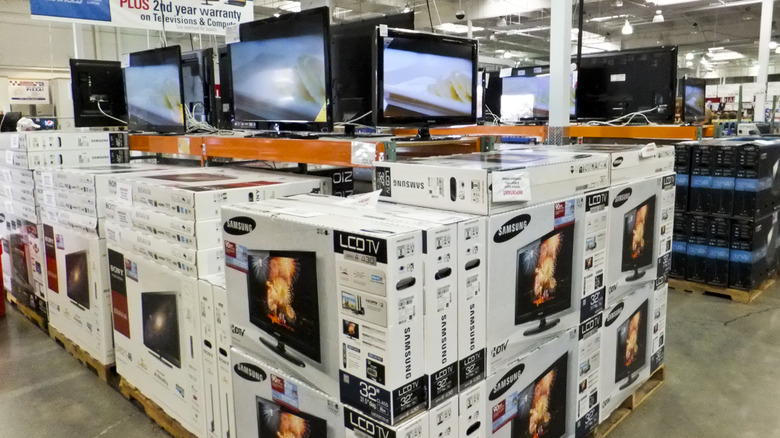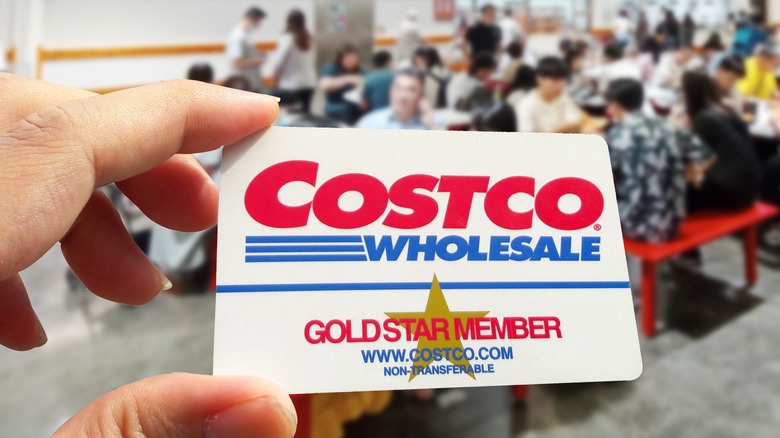The Wild Reason Costco Doesn't Label Its Aisles
The retail world is typically all about neatly organized aisles and clearly labeled signage. Most chains know their customers are usually on the move and want to find items quickly and efficiently. However, there's one retail giant that has a very different strategy — one that centers around a treasure hunt mentality, prompting shoppers to meander through the store and discover unexpected deals and products along the way. Guess who?
If you had Costco on your bingo card, you're right. Its unconventional approach to in-store navigation is no accident. The membership-driven retailer has purposefully chosen to forgo the common practice of aisle guiding. Instead, its aisles are intentionally designed in a jumbled layout, leaving members to navigate the maze-like store armed only with their wits and a keen sense of adventure.
If you're wondering why a company would intentionally make it harder for customers to find what they're looking for, you've clearly never shopped at Costco. The usual shopping mantra, "if it's not on the list, it's not in the cart," takes a backseat to the allure of bulk discounts and the promise of future meals. This clever strategy not only increases sales, but also creates a unique shopping experience — for instance, sometimes Costco rings a bell to signal that new items have been restocked — that has become a hallmark of the brand. That's why the more savvy Costco customers avoid making common shopping mistakes by entering with a specific plan in mind.
Costco's unique retail strategies
This ambiguous aisle setup is not the only retail strategy that separates Costco from many of its more mainstream competitors. While Costco's limited product selection may seem like a disadvantage, it is actually a major asset. While traditional retailers typically stock tens of thousands of items, Costco offers around 4,000 products at any given time. This limited selection allows for higher inventory turnover and better pricing on the items it does carry, consistently ensuring that customers receive quality goods at competitive prices.
Another strategy that runs counter to the mainstream retail landscape is how Costco minimizes operational costs by keeping its stores simple. Products are often displayed on pallets rather than neatly arranged on shelves or showcased in fancy, high-tech displays. This no-frills approach reduces labor costs and allows for a more efficient shopping experience. The pallet displays are immediately retail-ready, require minimal setup, and allow Costco to quickly restock as needed.
By leveraging these rather non-traditional strategies, Costco has put the focus on value and quality over flash and dazzle. This helps it stand out in today's crowded retail landscape.
Costco's value proposition
These strategies are clearly working for Costco, as the retail behemoth continues to hold a significant position in the U.S. retail market. It became the third-largest retailer in the U.S., with sales topping $195 billion in 2021, trailing only Walmart and Amazon (per Statista).
Costco also generates impressive sales per location, with each warehouse earning approximately $252 million annually in 2023 (per Statista). The company boasts strong membership loyalty, with a 92.6% renewal rate in the United States and Canada in 2023 (per Retail TouchPoints Network).
Despite having fewer stores, Costco has effectively competed with other major retailers due to its unique value proposition, which includes bulk goods, low prices, and exclusive products. So, even though you may have to wander around a bit to find exactly what you want, Costco shoppers have happily discovered that the journey is part of the reason they walked through the warehouse's doors in the first place.



